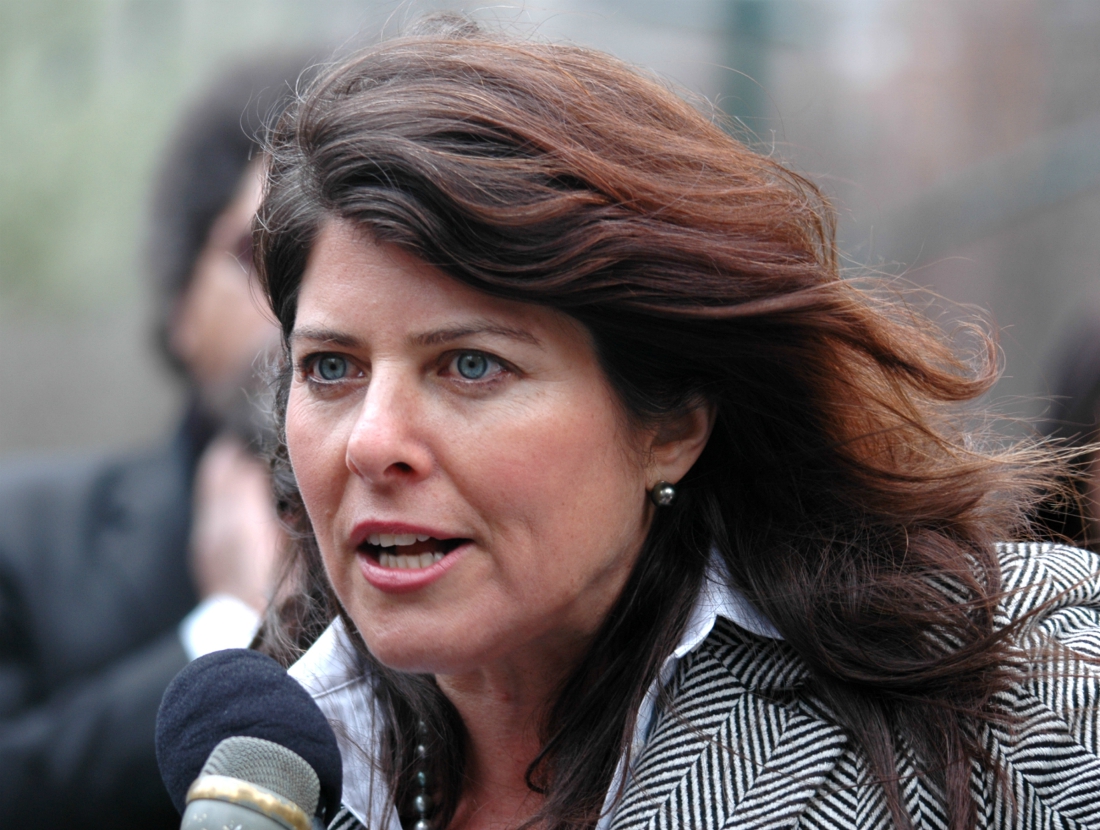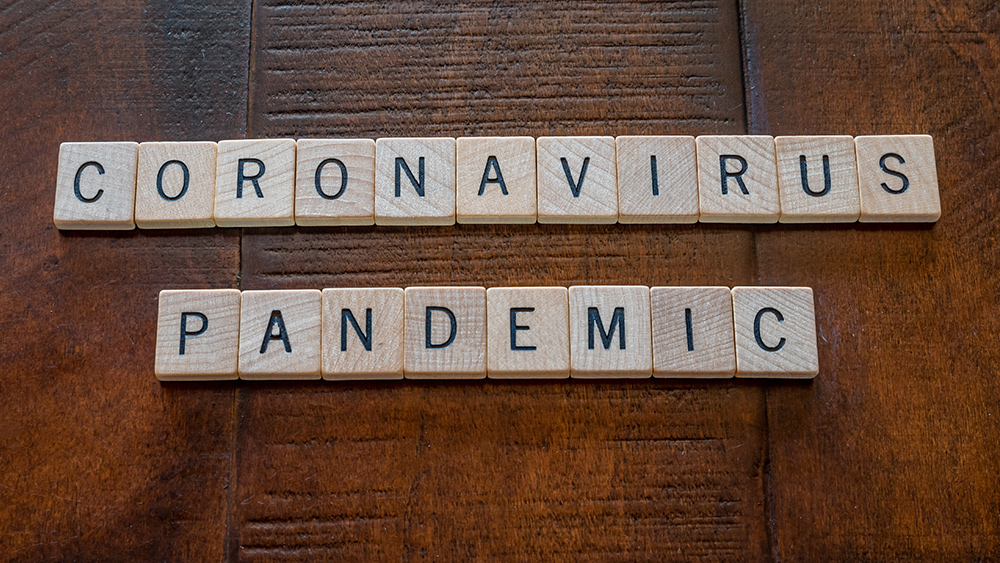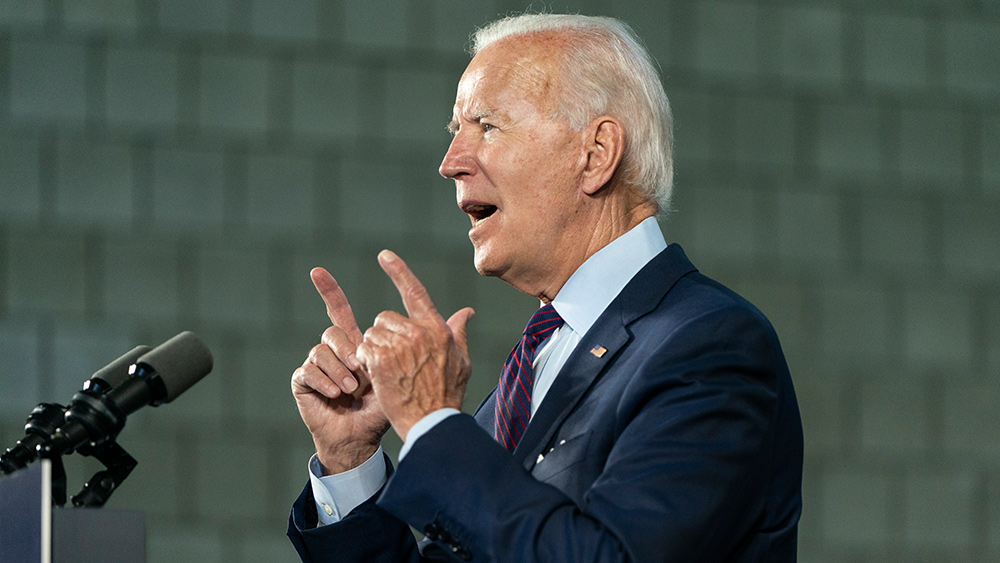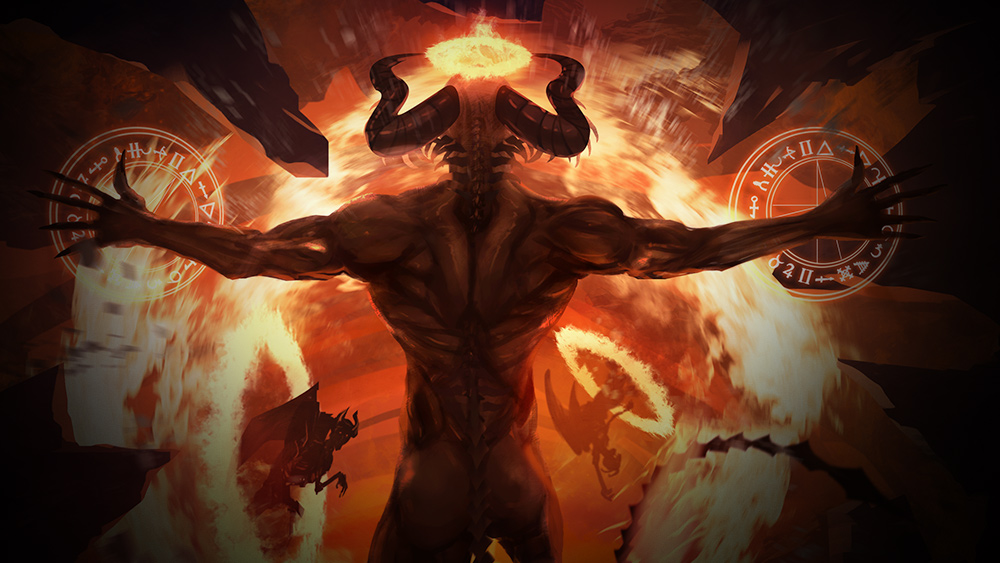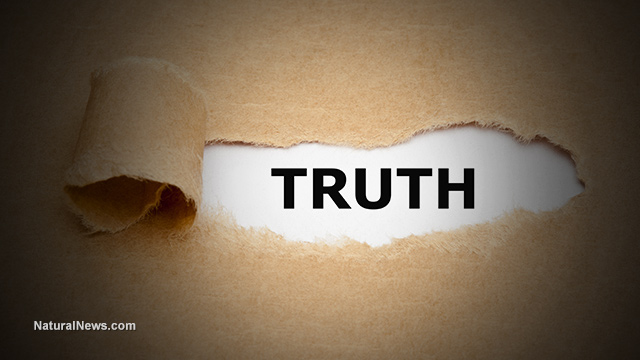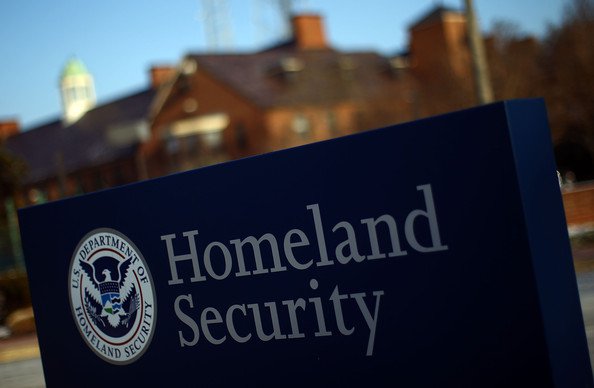‘Red November’ and the march of the crybullies
07/14/2020 / By News Editors

Breitbart News Senior Editor-at-Large Joel Pollak’s new book Red November: Will the Country Vote Red for Trump or Red for Socialism? provides a fascinating and disturbing account of the Democrat Party’s lurch to the hard left during its 2020 primary.
(Article by John Hayward republished from Breitbart.com)
It also tells the tale of how crybully culture spread from college campuses to infect mainstream American culture and politics. A rough beast slouches from academia to the polls to be born, its hour come round at last.
Crybully tactics are a disease that, like so many other hideous ideas of the hard left, grew in the petri dishes of our overpriced universities for years before infecting the general public. It no longer takes an entire generation for these thought-viruses to become epidemics. The Wall Street Journal warned about the “rise of the college crybullies” in 2015. Five years later, they’re vandalizing national monuments, shutting down cities, destroying our common language, and unleashing a wave of crime and murder against terrified voters.
The crybully exploits victimization to gain totalitarian political power, fusing victim and oppressor into a single malign sado-masochistic political entity. The demands of duly accredited victims cannot be refused. They have the divine right to erase history, censor our speech, and ignore the law to achieve their sacred ends. Disagreeing with them is a hate crime. Resisting them is an invitation to violence and destruction that might not be policed or prosecuted, if the victims have the misfortune to live in a Democrat-run city.
Pollak’s book finds the beginning of the crybully moment in the sense of frustrated idealism surrounding Sen. Bernie Sanders’ failed campaign for the 2020 presidential nomination and the inexorable shift of frontrunning candidate Joe Biden toward the hard left. Pollak notes:
On every single issue, Biden had been forced, by his rivals and by his party’s voters, to adopt policies far to the left of his lifelong positions. He endorsed almost every ‘democratic socialist’ priority and program. He wanted ‘Medicare for All’ to be a choice, and proposed a ‘Green New Deal’ with more generous deadlines than those demanded by the far left. Otherwise, there were few distinctions. Like Sanders, Biden saw the 2020 election as an opportunity ‘to fundamentally transform’ America.
The thing about fundamental transformation is that it requires compulsive force to execute. The fundamentally transformed must be given no say in the matter, no option to decline the demands of those who would impose a new way of life upon them. If the left gives conservatives any chance to speak, they would probably go running around and conserving stuff, and we can’t have that.
Pollak recalls feeling the messianic fervor at a Sanders rally on March 1, just a few days before the coronavirus lockdown hammer came crashing down, sufficiently in touch with his left-wing inner child to remember how excited his college-liberal self would have been to watch an avoid socialist come within striking distance of a major-party presidential nomination. The theme of the rally was “Fight the Power,” the title borrowed from a song by Public Enemy… which was in attendance except for exiled member Flavor Flav, who became the public enemy of Public Enemy by snorting that he didn’t want to join the Sanders crusade by providing “the soundtrack of a fake revolution.”
There you have the central contradiction of left-wing thought, the difference between “liberal” and “leftist,” and the womb of cognitive dissonance from which the crybully movement sprang: the understanding that a real revolution requires power, force, violence, and usually killing. Bernie Sanders sincerely wanted a socialist takeover, but he was too wedded to the old political model of persuasion and consensus-building. He worked within the system of Democrat Party politics in 2020, even though the nomination was plainly stolen from him by Democrat power brokers in 2016.
Sanders is not nearly stupid enough to believe his beloved socialist system would be devoid of compulsive force once it was implemented – he visited all the commie hot spots in his youth – but he was old-fashioned enough to think the American people should get one last vote before their lives were changed irrevocably. There would never be any coming back from programs like “Medicare for All” or the “Green New Deal,” but Sanders was fairly open about where he wanted to take the country, and he wanted the American people to consecrate their transformation by voting for it.
The crybullies have no patience for any of that. Nobody gets to vote on whether time-honored monuments should be torn down, or the English language purged of every term that accredited victim groups find offensive. In their minds, putting their righteous crusade up for a vote would be blasphemous. By definition, if you don’t agree with them, you lack the moral standing to vote against them.
Pollak’s account of the 2020 Democrat primary touches on the internal contradictions of an ideology that claims “the system is broken” and must be fixed by Democrats, even though they have dominated and controlled that system for generations, with very little practical resistance during the brief moments when Republicans held the White House and congressional majorities. Pollak takes it as a sign of left-wing frustration that a fair number of disappointed Sanders voters pulled the lever for Donald Trump in 2016, registering their profound disgust with a “broken system” by voting for the man who promised to ride into Washington, D.C. on a wrecking ball.
The crybully movement brewing on the hard left thinks mainstream Democrat patter about a “broken system” is a cowardly dodge, an effort by softer left-wing politicians to wheedle votes from a fundamentally conservative population that is excited by promises of bold change and utopian visions, but not terribly eager to actually blow up the entire system and allow their lives to be disrupted.
Serious left-wingers think it’s time to admit the people themselves are the problem and overthrow them for their own good. This conviction radiates palpably from the pronouncements of Antifa and Black Lives Matter. It is the basis for all those theories of systemic, inherent, and even unconscious racism that animate BLM’s political theorists. It’s also deeply woven into the radical environmentalist movement that has been gaining strength on campus since before the crybullies matriculated. Global warming cultists are not shy about describing democracy as a problem that must be overcome, because the people must not be allowed to cast votes against the urgent needs of the Earth.
Pollak describes the 2020 election as “a clear choice between the Tea Party and Occupy – between the restoration of [America’s] ideals or a democratic socialist revolution in the style of the rivals America had defeated.”
Occupy Wall Street was actually the second effort by the left to co-opt and counter the populist energy of the Tea Party movement, which absolutely terrified left-wingers for a few years. (They didn’t really need to worry – they long ago terrorized Republican leadership into developing severe allergies to populist energy, so it was inevitably the GOP Establishment that killed the Tea Party.)
The first Democrat Tea Party was a brief, embarrassing, long-forgotten effort called the “Coffee Party” that was essentially a snotty jeer at the Tea Party folks for being uneducated red-state rubes who didn’t understand the magnificence of the Obama transformation of America.
Occupy was the second pushback, and it embraced the use of compulsive force in a way the toothless snark of the Coffee Party never did. Occupy was defined by the use of force. They squatted on public property and refused to leave, unlike the Tea Party, which scrupulously applied for permits and cleaned up after its brief demonstrations. Occupy wanted to make people listen to them.
Occupy was a dry run for the violent left-wing insanity that erupted after the coronavirus lockdowns. Version 3.0 of the hard left’s populist movement added the dose of righteousness that was missing from Occupy, and its target is the people of the United States, not just their corporate and government systems.
Occupy accused corporate-political partnerships of exploiting the people. Antifa and Black Lives Matter accuse, convict, and sentence the people themselves. With corporate and Big Tech power harnessed to the left’s agenda, the people will not be allowed to make “wrong” choices any more, even if those choices are not explicitly illegal. There will be no votes on these new unwritten laws, no legislative process to grind along for years, no “obstructionism” from dissidents.
Pollak writes extensively about “The Resistance,” the political cult of left-wingers that play-acts at being resistance fighters against the tyranny of the Orange Hitler, that sees themselves as “the rebel army in the Star Wars sequels.”
(Which brings up an interesting cultural side note: the recent Star Wars sequel trilogy differs from the original in that the evil First Order is never really defined. Its structure makes no sense, its goals are murky, the inability of good people to halt its rise to power is inexplicable, its troops are brainwashed robots instead of volunteers who thought they were doing the right thing, and its leader turns out to be a puppet who was grown in a laboratory. It’s like the oppressors are a fever dream of the “Resistance,” as the good guys call themselves – a vague evil sketched in to provide a justification for the heroics of the main characters. That’s an intriguing parallel to how the “Resistance” movement of 2016-2020 sees itself and its adversaries.)
The Resistance mindset was a major force in pushing the Democrat primary to the left, as Pollak chronicles. The post-pandemic riots of 2020 were not dissimilar to the “Not My President!” street theater staged by left-wingers after Trump’s election. The less physically active cogs in the Democrat machine churned out countless editorials challenging the legitimacy of the 2016 election, featuring such ideological fetishes as getting rid of the Electoral College, and of course the “Russian collusion” hoax that utterly consumed the Democrat media for years.
This, again, is an attack on the American people, not the “broken system” Sanders and most of the Democrat primary contenders wailed about. The people voted wrong, so their choice must be erased, and they must never be allowed to vote wrong again. Pollak points out that the “Resistance” is very keen on silencing its opponents, including constant efforts to deplatform dissidents and shut down conservative news organizations like Breitbart News by bullying their advertisers away. The people must not be given the option of listening to such dangerous voices.
The “Resistance” gave the left a narrative of heroic victimhood to embrace. Heroic victimhood is an important idea in American culture today. There is an active campaign against the old, outmoded, masculine, and patriarchal notion of a hero as a brave man or woman who takes bold action against threats and dangers. Heroism is now better understood as victims who suffer bravely and inspire others to push back. Think again of those new Star Wars movies, where the heroes somehow became victims in a situation the story never even bothers to explain, erasing the triumphant ending of the original saga.
From the dark side of heroic victimhood come the crybullies, who believe they have an absolute moral right to rule, and no one has the moral stature to disagree with them. Their critics are all villains who must be defeated, not well-meaning people with a sovereign right to disagree. At last, the crusading leftism embodied by Bernie Sanders has a battle flag it can march under. Pollak tells fascinating tales about the collapse of once-formidable 2020 contenders like Sen. Elizabeth Warren and Kamala Harris, who were ultimately judged too phony and opportunistic to march at the head of the crybully crusade. Warren’s fake-Indian claim to heroic victimhood is a transparent farce, the subject of widespread mockery, and if there is one thing crybullies cannot stand, it is the sound of hearty laughter from their enemies.
Pollak’s Red November is a story about the 2020 Democrat primary that inevitably tells a story about the four years that preceded the contest. The rise of the crybully crusader mentality could be glimpsed in such warm-up acts as Brett Kavanaugh’s confirmation hearing for the Supreme Court and the debate over the Green New Deal. The rising stars of the hard left, the people who would really be running a Joe Biden administration, are radicals like Reps. Alexandria Ocasio-Cortez and Ilhan Omar who loudly disdain the notion of understanding what their opponents think or listening to the facts advanced in their arguments.
For those radicals, inconvenient facts are an enemy to be defeated through political acts of faith and devotion. They are not interested in hearing any critic’s explanation of how things are, because everything will change once they are in power. The law, the people, and even the natural world will be beaten into shape after they’re in charge. They demonstrate their commitment to their narrow vision by studiously ignoring everything outside of it.
Pollak patiently chronicles the defeat of one 2020 Democrat also-ran after another, discarded by mainstream primary voters who thought they were too soft to take on Donald Trump… and by Resistance leftists who thought they were too soft to take on the American people. If Joe Biden wins in November, his only real job will be disabling the last effective barriers to power, the last protections of representative republicanism afforded to American citizens who disagree with the party in power. The crybullies will take it from there.
Read more at: Breitbart.com or Crybullies.news
Submit a correction >>
Tagged Under:
antifa, BLM, Crybullies, democrats, Demoncrats, elections, left cult, lies, lunatics, obey, politics, propaganda, protests, red november, riots, Trump, Tyranny
This article may contain statements that reflect the opinion of the author
RECENT NEWS & ARTICLES
COPYRIGHT © 2017 OBEY NEWS


